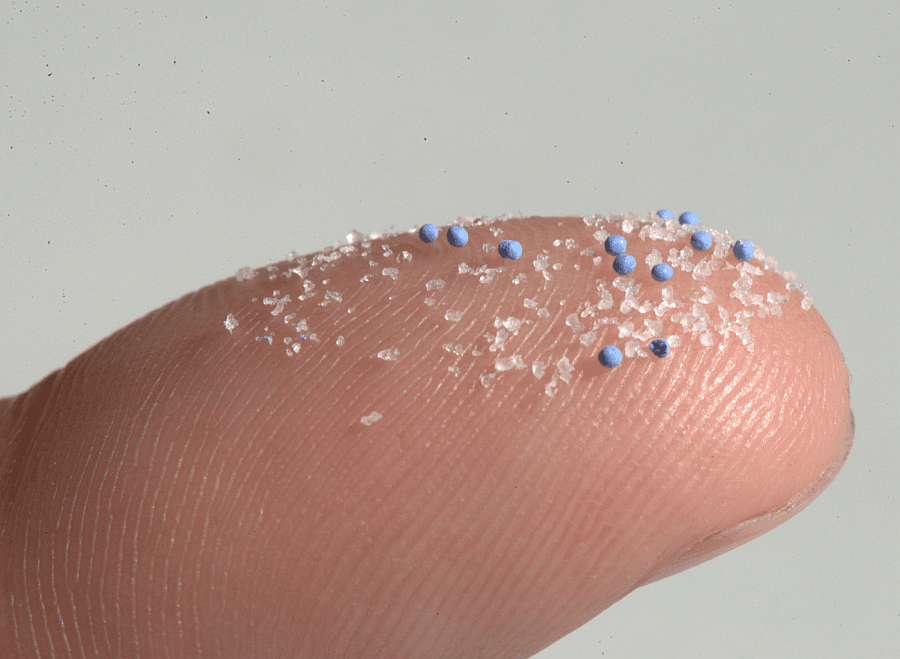There are buckets of myths and misconceptions floating around about TDS in drinking water. Keep reading to discover the real truth about TDS, including hazardous and healthy dissolved solids, what nobody tells you about TDS levels and meters, and more. We’ve broken everything down into simple, easy-to-understand language backed by fact, so you’re crystal clear on TDS and are never misled or misinformed.
Understanding Drinking Water & Total Dissolved Solids (TDS)
Share This Article:

What Are TDS?
TDS is an acronym for Total Dissolved Solids. Total Dissolved Solids found in drinking water include inorganic materials as well as natural particles and organic compounds such as salts, minerals and electrolytes, chlorides, and metals. Common examples include calcium, magnesium, potassium, sodium, fluoride, and nitrate. A certain amount of TDS is normal, harmless, and in some cases, even beneficial depending on the specific solids and the levels at which they occur.
How Do They Get Into Our Water Supply?
TDS can come from natural sources like rock and soil, agricultural and industrial runoff, sewage, wastewater, and more. For example, salt from de-icing roads, pesticides from fertilizer, metals from mining and pipes, minerals from rocks, and even chemicals and byproducts from water treatment and treatment systems can all contribute to TDS in your water supply. The point is, some dissolved solids occur naturally and others do not. And as you’ll see in just a second, some are beneficial and others are not.
Are All TDS Bad?
Let’s nip this common myth in the bud. No, all TDS are not bad. That’s why you should never assume water with allowable levels of TDS is polluted or unsafe to drink, nor that water with zero TDS is the gold standard for quality and cleanliness (more on that later). For now, let’s take a look at hazardous and healthy dissolved solids to further illustrate this point.
Hazardous vs. Helpful TDS
Here are a few hazardous contaminants classified as TDS:
-
Lead: This common heavy metal has been associated with learning disabilities, nervous system damage, and more.
-
Nitrate: A chemical found in fertilizer, animal waste, and sewage, elevated ingestion has been associated with cancer, blue baby syndrome, thyroid issues, and more.
-
Arsenic: This natural carcinogenic chemical found in soil, rocks, and minerals has been associated with several cancers.
-
Certain pesticides: These chemical substances formulated to control pests have been associated with everything from reproductive problems and cardiovascular issues to cancer.
Here are a few acceptable and beneficial minerals classified as TDS:
-
Potassium: Potassium can have beneficial effects on your blood pressure, brain, and heart, and can help prevent muscle weakness and cramps.
-
Magnesium: Magnesium can help support digestive health, nerve function, and energy production.
-
Calcium: Calcium can help build and maintain strong bones, and regulate the rate and rhythm of the heartbeat.
Remember, these harmful and healthful dissolved solids are combined to form a TDS water reading or level.
How Do You Measure TDS?
The most common and accessible way to measure TDS yourself is with a TDS meter. The handheld device gives you what is supposed to serve as an estimate of TDS in seconds, by measuring water’s conductivity (more on that in a minute). The problem is TDS meters do not measure nor specify each individual solid. That begs questions like: What can and can’t be measured by a TDS meter? Is the TDS made up of harmful solids, helpful solids, or both? And at what level does each occur? After all, the level of each determines the risk and/or reward.
To better protect you from harmful dissolved solids, public water suppliers are required to take TDS measurements a step further to ensure detailed and accurate results. By law, they must monitor and measure TDS regularly and share the results of comprehensive water tests in annual water quality reports.
How Do TDS Meters Work?
Many dissolved solids naturally increase water’s conductivity. Therefore, TDS meters measure _conductivity_—not contaminants—to estimate TDS levels.
Because TDS meters measure the conductivity of water, they only detect dissolved solids that conduct electricity. In other words, they detect charged solids like electrolytes—not all contaminants. The TDS meter then converts the conductivity measurement into a concentration measurement of parts per million (ppm) or milligrams per liter (mg/l) to serve as an estimate of TDS levels.
The bottom line is TDS meters provide an estimate of TDS based on electrical conductivity of water—they do not detect all contaminants, nor provide a flawless or complete measure of each dissolved solid. In fact, they will detect and register beneficial electrolytes and certain minerals as dissolved solids. To better protect you from harmful dissolved solids, public water suppliers are required to take TDS measurements a step further to ensure detailed and accurate results. By law, they must monitor and measure TDS regularly and share the results of comprehensive water tests in annual water quality reports.
What TDS Meters Do (& Don’t) Tell You
As mentioned before, TDS meters do not pinpoint the specific solids in water, nor the specific levels of each. But that’s not all: TDS meters do not detect certain dissolved solids that are not conductive, nor dozens of other dangerous tap water contaminants. Examples of contaminants that TDS meters don’t measure or detect include certain metals, pharmaceuticals, pesticides, bacteria, and cancer-linked PFAS.
Toxic TDS Like Lead, Arsenic, and Chromium 6 Typically Aren’t Detected By TDS Meters Until It’s Too Late
Not only do “uncharged” contaminants go undetected by TDS meters, there are toxic dissolved solids that aren’t detected by TDS meters until they reach excessive and dangerous levels. For example, lead levels in water must be at least 70 times the legal limit to even register on a typical TDS meter. Arsenic levels must be at least 100 times more than the allowable legal limit. And chromium 6 levels must be at least 50,000 times the recommended public health goal. This is another reason TDS levels are not a complete nor accurate indication of water quality, safety, and cleanliness.
Low TDS vs High TDS
Beyond adverse health effects from prolonged exposure to excessive and specific TDS, high levels of TDS can contribute to hard water and scaling, discolored or cloudy water, a salty or metallic taste, and corroded pipes or fixtures. However, low TDS has issues too. Low TDS levels can be associated with tasteless flat or “dead” water, and can be stripped of the aforementioned natural minerals and nutrients that can benefit your body.
The Bottom Line About TDS
TDS can be an indication of many things: hard water, healthy water, polluted water, you name it. The important thing to remember is high TDS may not mean low water quality and low TDS may not mean high water quality. It all depends on the type of TDS and volume of each forming the reading, as well as other contaminants in water that are not classified as dissolved solids and/or undetected by TDS meters. Before we take a look at regulations around TDS in drinking water, let’s recap the 3 key limitations of TDS measurements:
-
Several hazardous dissolved solids go undetected by TDS meters, even at dangerous levels. Many do not register on meters until they reach thresholds far higher than legal limits and recommendations.
-
TDS includes good and bad dissolved solids—but does not differentiate the two. Some beneficial dissolved solids register higher than their toxic counterparts.
-
TDS meters do not detect contaminants that are non-conductive. Certain metals, pharmaceuticals, pesticides, bacteria, and cancer-linked PFAS are not detected by TDS meters.
The U.S. EPA Recommendation For TDS Levels In Drinking Water
The EPA’s National Secondary Drinking Water Regulations (NSDWRs) have a non-enforceable, secondary standard of 500 mg/l TDS. In other words, the EPA has deemed there are no significant health concerns with TDS measurements lower than 500 mg/L. That’s not to say those levels are safe or recommended. It’s simply to illustrate where the EPA stands on the issue, and shows the ambiguity within TDS measurements to accommodate good and bad dissolved solids.
-
Several hazardous dissolved solids go undetected by TDS meters, even at dangerous levels. Many do not register on meters until they reach thresholds far higher than legal limits and recommendations.
-
TDS includes good and bad dissolved solids—but does not differentiate the two. Some beneficial dissolved solids register higher than their toxic counterparts.
-
TDS meters do not detect contaminants that are non-conductive. Certain metals, pharmaceuticals, pesticides, bacteria, and cancer-linked PFAS are not detected by TDS meters.
WHO Recommendation For TDS Levels In Drinking Water
In a study by the World Health Organization, a panel came to the following conclusions about the preferable level of TDS. The numbers below are measured in mg/l:
-
Less than 300: Excellent
-
300 – 600: Good
-
600 – 900: Fair
-
900 – 1,200: Poor
-
Above 1,200: Unacceptable
As you can see, the ambiguity remains.
-
Several hazardous dissolved solids go undetected by TDS meters, even at dangerous levels. Many do not register on meters until they reach thresholds far higher than legal limits and recommendations.
-
TDS includes good and bad dissolved solids—but does not differentiate the two. Some beneficial dissolved solids register higher than their toxic counterparts.
-
TDS meters do not detect contaminants that are non-conductive. Certain metals, pharmaceuticals, pesticides, bacteria, and cancer-linked PFAS are not detected by TDS meters.
Bottled Mineral Water & TDS
The bottled mineral water many people turn to seeking a safe and quality supply of drinking water intentionally contains high TDS. That’s because beneficial minerals predominantly contribute to that TDS measurement. As a matter of fact, U.S. bottled water must contain at least 250 ppm TDS to even be labeled as “mineral water.” At time of publication, Evian mineral water has 340 mg/l TDS, Perrier mineral water has 475 mg/l TDS, and Pelligrino mineral water has upwards of 854 mg/l TDS. Clearly, TDS alone is not an accurate measurement of water quality.
Purified Water & TDS
On the other end of the spectrum of mineral water is purified water. Purified water must have less than 10 ppm TDS to be labeled as “purified.” As we’ve already established, TDS doesn’t account for all contaminants. Not only do purifiers remove good and bad dissolved solids and impurities, they can leave water littered with other dangerous contaminants that aren’t classified as TDS.
The Problem With RO Systems, Water Distillation, & Deionization
Reverse Osmosis systems, distillation, and deionization are the only ways to virtually eliminate TDS for a near-zero reading. The problem is they strip water of _everything_—including beneficial dissolved solids.
Therefore you’re left with tasteless “dead” water void of beneficial minerals and nutrients. While some people choose to remineralize filtered water to replace the removed solids, it’s an added step (and cost) that doesn’t make up for the wasteful and inefficient nature of RO water and purifiers, as well as the drawbacks of distillation and deionization.
Typical Carbon Filters & TDS
Typical carbon water filters sold by leading brands are not powerful enough to eliminate harmful TDS. Most don’t do much more than remove sediment. In other words, they leave much of the good and bad in your water. If you want to protect yourself from harmful dissolved solids without sacrificing beneficial dissolved solids, you need a superior filtration technology that recognizes each and knows what to do with them.
Does Clearly Filtered Remove TDS?
Not necessarily, but that’s a good thing. Here’s the science, simplified: Our advanced Affinity® Filtration Technology recognizes beneficial minerals and nutrients and allows them to pass through, while targeting harmful dissolved solids and other dangerous contaminants. Since our filtration systems have the power to recognize beneficial solids and retain them, it’s no surprise TDS measurements remain above 0 after filtration.
To perform this level of sophisticated filtration, our advanced filters may slightly alter the charge of water. In rare cases, this can result in a higher TDS reading. Don’t be alarmed: This, again, demonstrates the flaws of TDS readings and meters. For example, the impact on TDS of a healthy mineral like potassium can be double that of a poisonous solid like lead. In short, the healthy minerals and nutrients we intentionally allow to stay in your water can have higher conductivity than other dissolved solids, and therefore produce elevated TDS levels in some situations.
Why Clearly Filtered Is The Superior Solution
Unlike wasteful and inefficient RO water filtration systems as well as weak carbon filtration systems, our proprietary Affinity Filtration Technology pinpoints harmful and healthy dissolved solids to intentionally virtually eliminate the bad and retain the good. And it does it all in one step.
Without Clearly filtered, you have just two choices: Strip your water of everything (including beneficial TDS) or allow dangerous pollutants and contaminants to remain in your water. Click here to upgrade to Clearly Filtered to target the bad, retain the good, and get complete confidence in your water.
Wondering What’s In Your Water?
Our free tap water database linked here goes beyond incomplete and unclear TDS measurements to reveal exactly what’s in your water, broken down by contaminant and level. Remember, our public water supplies here in America are tested regularly to ensure tap water meets the drinking water standards set by the EPA, as well as state standards and local regulations. Our free database compiles all of these test results so you can see exactly what’s in your water, how it can affect you, and how to best protect yourself and your family. Simply enter your zip code here to take a look at what’s in your water.
Without Clearly filtered, you have just two choices: Strip your water of everything (including beneficial TDS) or allow dangerous pollutants and contaminants to remain in your water. Click here to upgrade to Clearly Filtered to target the bad, retain the good, and get complete confidence in your water.
References
1. Potassium and your body: What you need to know https://www.webmd.com/a-to-z-guides/story/potassium-and-your-body
2. What are the health benefits of mineral water? https://www.medicalnewstoday.com/articles/324910#digestive-health
3. Drinking Water Regulations and Contaminants https://www.epa.gov/sdwa/drinking-water-regulations-and-contaminants
4. Bottled Water Everywhere: Keeping it Safe https://www.fda.gov/consumers/consumer-updates/bottled-water-everywhere-keeping-it-safe#subscribe



